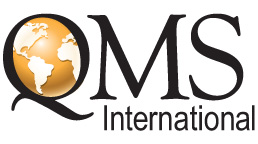

- Write policy, procedure, instructions and documents to the requirements of ISO 9001:2015 and the organization.
- Provide internal audits.
Assess existing documentation and its degree of conformance to the quality standard, using a gap analysis.
- Review of existing company policies, procedures, and practices (both written and understood).
- Compare this information against the ISO 9001:2015 Standard, to identify both conformance and any non-conformance (gaps) to requirements.
- Plan the timeline for execution of tasks and activities, including key milestones and resource requirements.
- Create new and update existing documentation, as needed.
- Train your employees to understand their roles and responsibilities; how the system impacts their jobs and how their jobs impact the system.
- Verify the effectiveness of the implementation of all aspects of your quality system.
- Onsite support to your employees during the certification audit.
- Provide feedback regarding action needed to address any nonconformities identified during the certification audit.
- Focus on your customer
- Provide leadership
- Involve your people
- Use a process approach
- Take system approach
- Encourage continual improvement
- Get the facts before you decide
- Work with your suppliers
Support for the required continued maintenance of your system to ensure its conformity, including, but not limited to
- Internal audits
- Root cause analysis
- Corrective actions implementation and follow-up
- Documentation updates (to reflect changes)
- Management review
- Resolution of other issues identified
- Get the facts before you decide
- Work with your suppliers
This service is offered to companies whom we have assisted in achieving their ISO 9001:2015 certification, as well as others who simply do not have the in-house resources and/or expertise, to effectively maintain their systems. The benefit of continued maintenance is that your system will meet the requirements at all times and prevents a scramble just before the required annual surveillance audits from the 3rd party registrar.

The ISO 9000 standard was designed by representatives from many different countries. The standard outlines the basic elements of a good quality management system. These elements are good business practice.
ISO 9000 is primarily concerned with providing management that will achieve quality, efficiency and effectiveness. This means anything that affects a product or service required by a customer and what that organization does to ensure that a certain standard of quality is achieved and maintained.
Implementing the ISO 9001 Standard as a Quality Management System can improve your business. In fact, that is why it was created. It is broadly recognized as a proven method of using a process approach to make your business better. It can make your organization more effective, and therefore more competitive.
Implementing the ISO 9001 Standard can improve organizational culture. Faithfully employing the standard can actually change how people feel and behave in the organization, and how its members interact with peers, subordinates, and superiors.
- Focus on your customer
- Provide leadership
- Involve your people
- Use a process approach
- Encourage continual improvement
- Get the facts before you decide
- Work with your suppliers
- Improve quality
- Reduce risk
- Measure effectiveness
- Increase productivity
- Increase profit margins